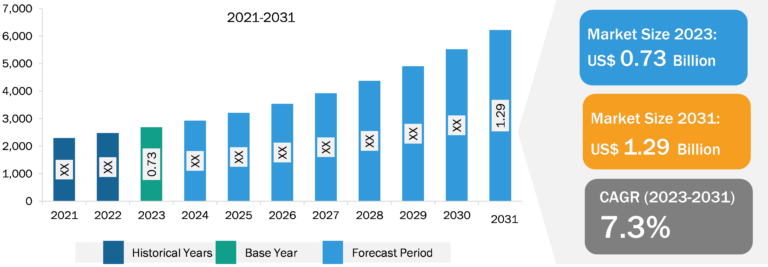
Cell-Cultured Leather Market
Based on geography, the global market is segmented into regions such as North America, Europe, Asia Pacific, and the Rest of the World. In 2022, North America held the largest global cell-cultured leather market share. The rising demand for footwear, luggage, and bags, as well as clothing products, and a growing focus on using sustainable products are providing opportunities for the cell-cultured leather market growth in North America. The rising awareness about the traditional leather manufacturing process, the growing focus of different companies to develop sustainable products, and the rising consumer demand for sustainable products are also fueling the market growth in the region.
Focus of Footwear and Apparel Industries on Developing Sustainable Products
In recent years, the demand for sustainable products has been increasing in various industries. Factors such as a rise in concerns regarding the environment and pollution, an increase in awareness regarding animal rights, and others have significantly boosted the demand for sustainable products. The footwear and apparel manufacturers are focusing on developing sustainable and environment-friendly products to fulfill consumer demand. Many footwear brands are developing products where sustainability and style coexist in perfect harmony. For instance, Nike has made considerable efforts to integrate sustainability into its product line. The brand has created sneakers crafted from reclaimed polyester. Reebok is another major player in the eco-friendly footwear arena. Reebok has been actively exploring different ways to incorporate recycled materials into their shoe designs. Further, the fashion industry is responsible for a large proportion of water usage, carbon emissions, and textile waste. The industry, in particular, significantly impacts the environment and social sustainability. As a result, many apparel manufacturers are focusing on environmental and social sustainability by making more sustainable products.

Cell-Cultured Leather Market: Segmental Overview
Based on application, the cell-cultured leather market is segmented into automotive, footwear, luggage and bags, apparel, and others. The cell-cultured leather market share for the apparel segment was recorded to be the largest in 2022. Automotive is another major application segment of the cell-cultured leather market. The automotive industry is one of the industries that makes use of environmentally hazardous and unsustainable products. The automotive industry consumes a large amount of fossil fuels, which contributes massively to climate change. However, in recent years, various automotive manufacturers have begun to offer sustainable alternatives in their vehicles as a result of increased consumer demand and attention to climate change. Consumers are increasingly choosing cruelty-free and sustainable options. Automotive manufacturers are also eliminating leather in response to consumer demand. For instance, Tesla has completely withdrawn the use of leather in their vehicles. Other luxury car manufacturers have also started planning to stop using leather in their car interiors, from seats, headrests, dashboards, and side pockets. All these factors are expected to drive the demand for cell-cultured leather for automotive applications.
Impact of COVID-19 Pandemic on Cell-Cultured Leather Market
Before the pandemic, the market for cell-cultured leather was mainly driven by the increasing demand for cruelty-free leather from various end-use sectors. However, due to the pandemic, governments of various countries across the globe imposed country-wide lockdowns that directly impacted the growth of the industrial sector. The shutdown of production facilities negatively impacted the cell-cultured leather market growth in 2020. The shortages in the supply chain of cell-cultured leather negatively impacted the market growth. However, with the ease of lockdown measures, various industries regained momentum, which increased the demand for cell-cultured leather. Further, various economies began reviving with the resumption of operations in different sectors in 2021. As a result, the cell-cultured leather market is also growing with the rise in demand from various industries such as automotive, footwear, and apparel.
Cell-Cultured Leather Market: Competitive Landscape and Key Developments
A few key players operating in the cell-cultured leather market are VitroLabs Inc, MODERN MEADOW, and Qorium. Players operating in the market focus on research and development activities to produce high-quality products to fulfill customer demand from various application industries.
Key Developments
- In 2022, VitroLabs Inc raised US$ 46 million to build and scale the world’s first pilot production of cell-cultivated leather. The Series A funding is led by Agronomics; other investors include BESTSELLER’s Invest FWD, global luxury group Kering, Khosla Ventures, actor and environmentalist Leonardo DiCaprio, New Agrarian, and Regeneration.VC. Moreover, Kering continues its partnership with VitroLabs Inc in bringing support for product quality testing, tanning, and finishing.
- In 2021, Qorium raised € 2.6 million (US$ 2.75 million) to expand research and development to scale up its cell-cultured collagen-based leather technology.
- In 2023, Modern Meadow raised Series D funding. The funding is led by Astanor Ventures, Horizons Ventures, and Key Partners Capital, which will support Modern Meadow to continue its innovation.







